Pacific Standard Time turns to one overlooked group in Latin America: Asian immigrants
History makes a rich reference point for art that explores the melting pot of cultures, and Pacific Standard Time: LA/LA exhibitions at three museums make that case in spades by focusing on unexpected cultural connections: Asians in the Caribbean and Latin America.
One exhibition, “Circles and Circuits,” comes in two parts that represent past and present. “History and Art of the Chinese Caribbean Diaspora” is at the California African American Museum in Exposition Park and “Contemporary Chinese Caribbean Art” is at the Chinese American Museum in downtown L.A. Meanwhile, the Japanese American National Museum has organized “Transpacific Borderlands: The Art of Japanese Diaspora in Lima, Los Angeles, Mexico City, and São Paulo.”
Themes of identity, memory and interconnectedness course through the veins of artists like Katarina Wong, who has a presence in both “Circles and Circuits” shows. During the installation of her work “Fingerprint Project: Murmuration Unfolding” at the California African American Museum, she checked the alignment of hundreds of small elliptical discs, wax pieces cast from the fingerprints of friends and family and held to the wall by long metal pins. Two arcs of discs seemed to float, an effect enhanced by shadows cast by overhead lighting and another set of shadows that Wong painted in ink onto the background.
“The title refers to the patterns starlings make when they flock,” she said. “I was inspired by this Federico García Lorca poem, which ends, ‘and where my body floats between opposing equilibriums.’”
Wong is Cuban Chinese, based in New York. She studied art at the University of Maryland, College Park, and Buddhism at Harvard Divinity School. From the latter, she said, she learned about the interdependence of all things.
“Circles and Circuits” was put together by Steven Wong, former chief curator at the Chinese American Museum and now curator at the L.A. Municipal Art Gallery in Barnsdall Art Park, and Alexandra Chang, director of global arts programs at New York University. Three years ago, Wong hit upon the idea for the show and approached the California African American Museum about a collaboration for the Getty’s PST LA/LA initiative.
Not all the artists are Chinese — that’s where the “circles” part of the title comes in. But the show demonstrates, Chang said, how artistic endeavors grow out of art leagues and community projects.
The Chinese started arriving in the Caribbean and South America in substantial numbers in the mid-1800s, seeking jobs and escaping political unrest. They worked on railroads and sugar and tobacco plantations. The Japanese arrived toward the end of that century, also to find work.
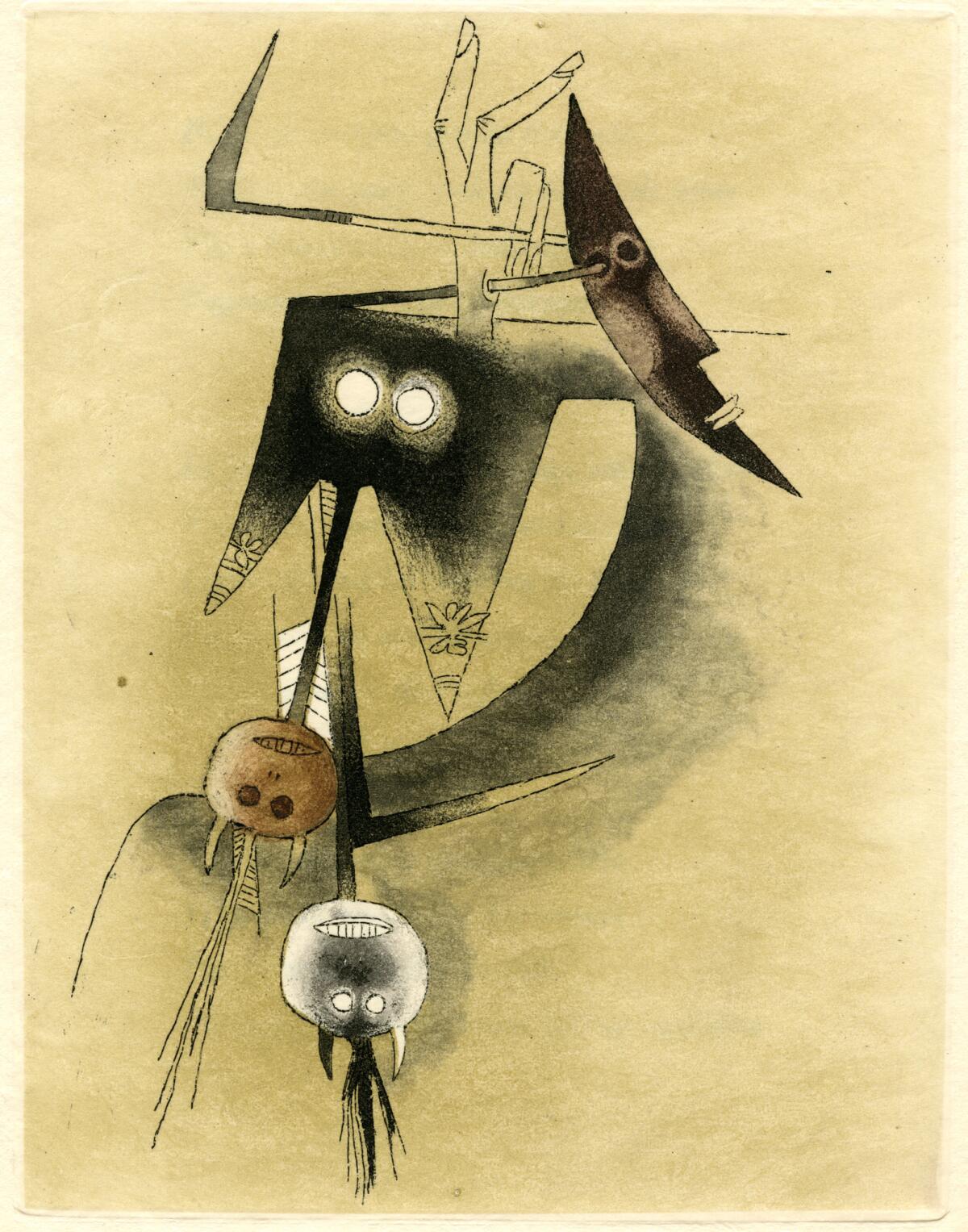
“History and Art” at the California African American Museum focuses on Panama, Trinidad, Cuba and Jamaica, but Chang said she and Steven Wong included artists from a wider diaspora — those living in New York, Toronto and San Diego.
Historically, the best known of these artists is probably Wifredo Lam, a Cuban Chinese who studied art in Madrid in the 1920s, met Picasso and Matisse in Paris in the late 1930s and returned to Cuba in 1941 because of World War II. Back home, he began exploring his Afro-Cuban roots through work that featured figures that were part-human, part-animal. A number of his prints from the early 1970s are here.
Other artists in the show are Sybil Atteck (Trinidad and Tobago), Manuel Chong Neto (Panama) and Carlisle Chang (Trinidad and Tobago), who studied under Atteck and later designed carnival costumes and public works, including a mural for Piarco International Airport on Trinidad.
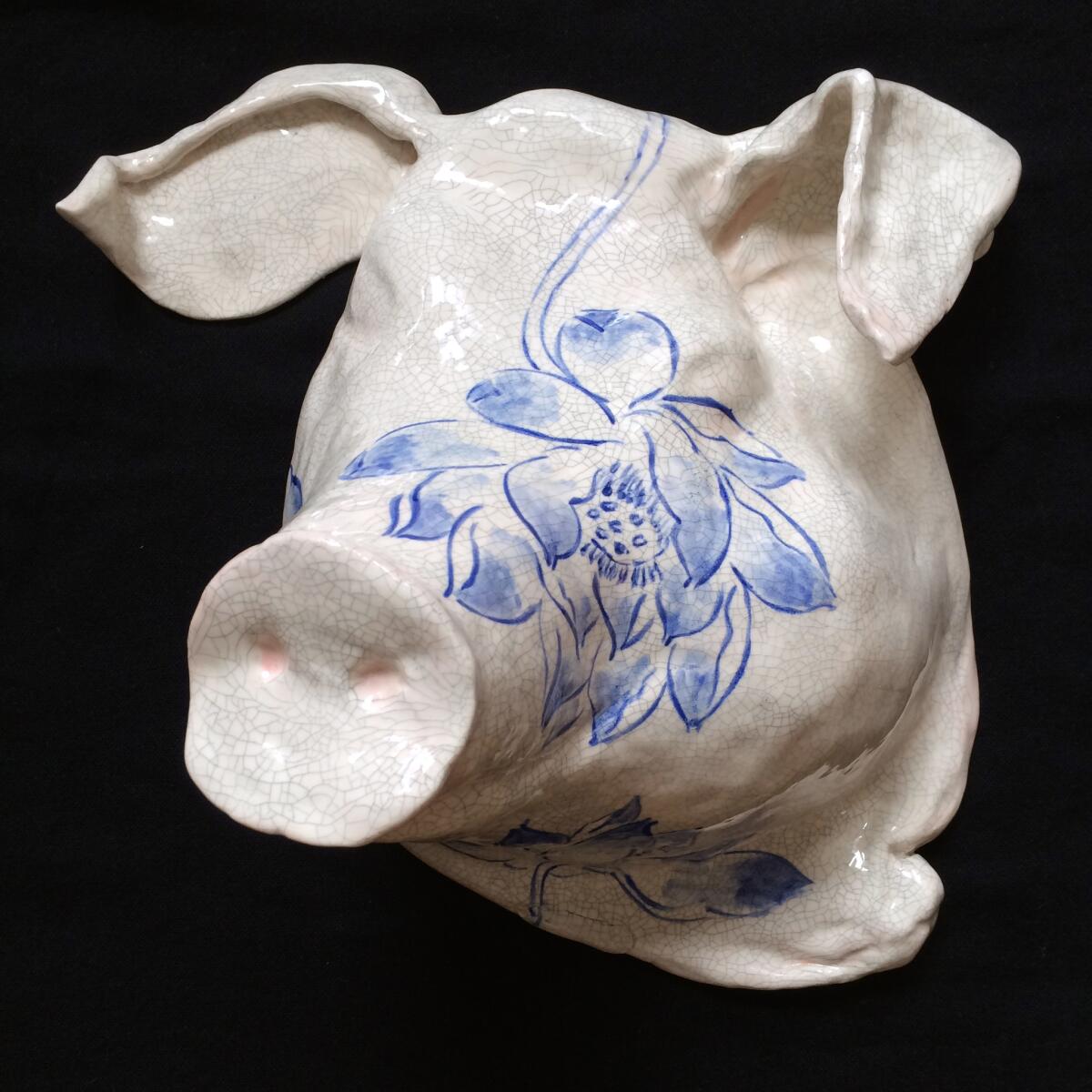
The Chinese American Museum show continues “Circles and Circuits” and also features pieces by Katarina Wong — blue and white ceramics reminiscent of porcelain from the Ming dynasty, except that these pieces are in the shape of two dead rabbits and two pig heads (references to unhappy memories of one dinner during a childhood visit to Cuba).
Other works include a large light box by Samuel Rumaldo Choy that shows a composite image inspired by a Panamanian juice stand, and a wash stand by Andrea Chung that has a pair of hands — made of soap — reaching out over the basin for visitors to use. Chung, who is based in San Diego and Kingston, Jamaica, made the piece as an hommage to her grandmother, who as a midwife in Jamaica played an important role in society yet was marginalized.
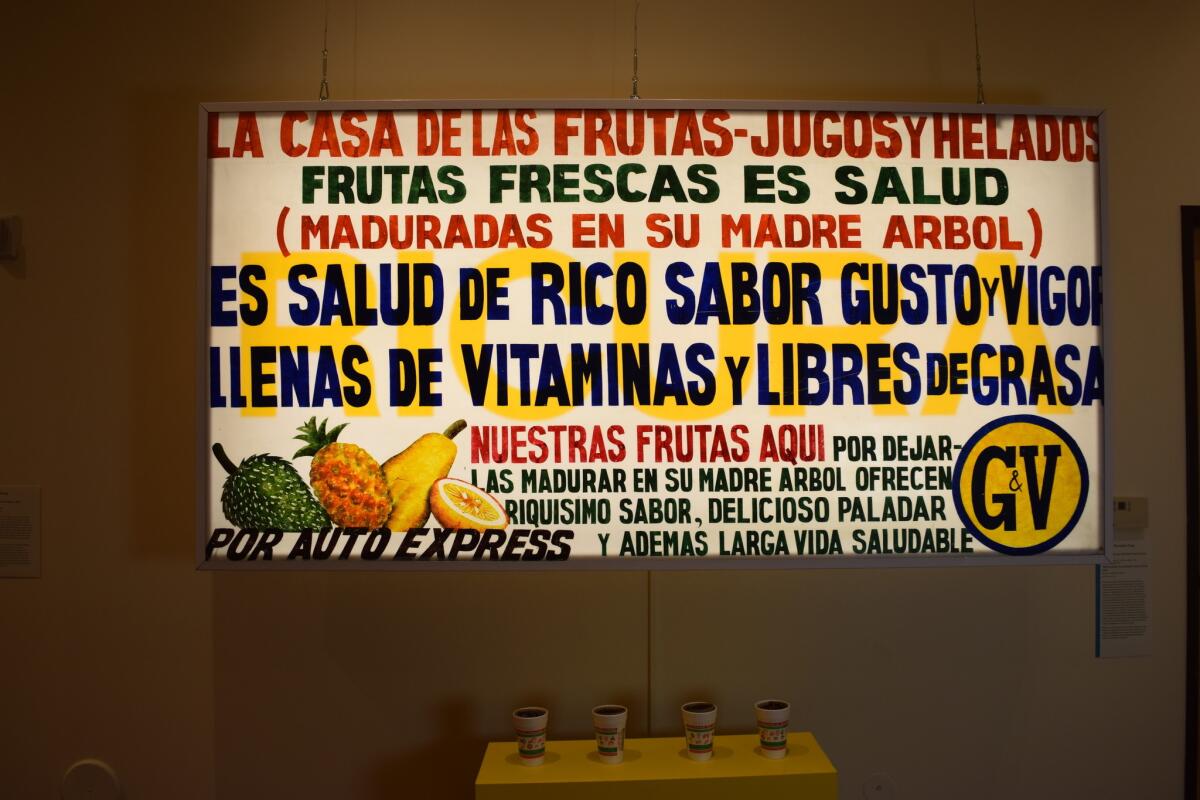
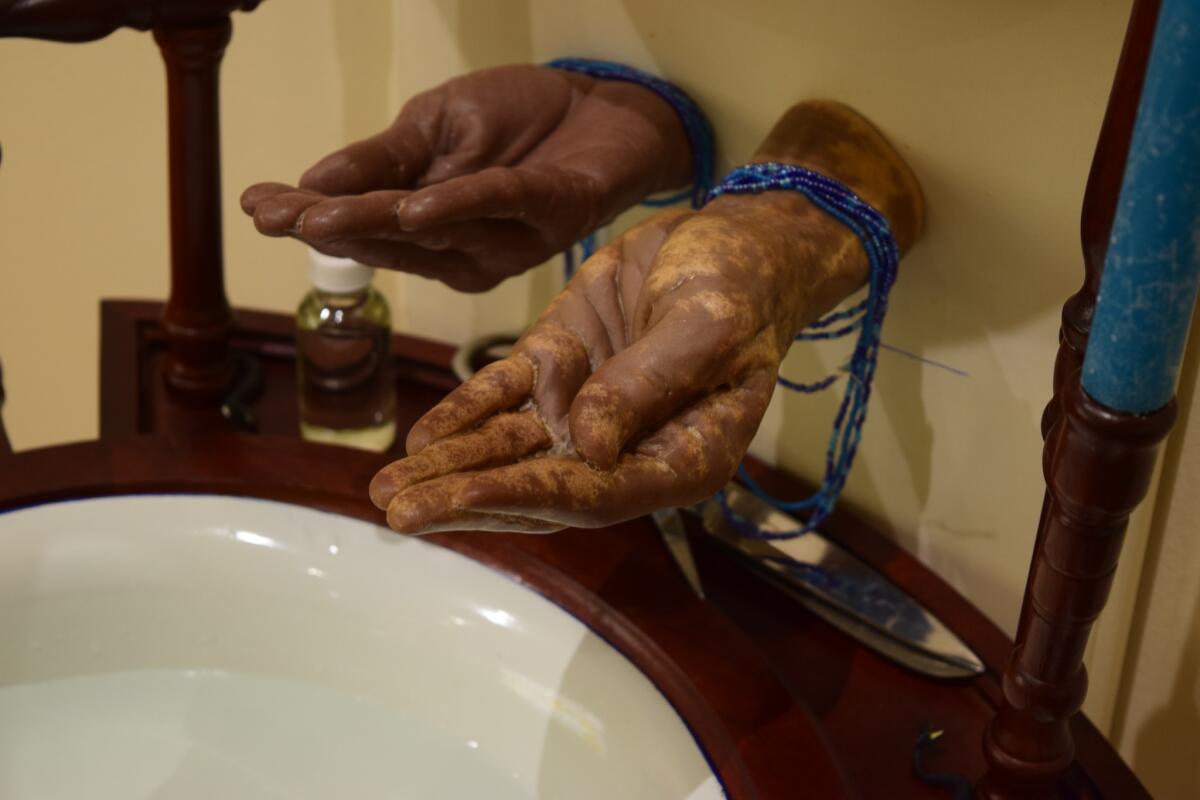
SIGN UP for the free Essential Arts & Culture newsletter »
The Japanese American Museum’s “Transpacific Borderlands” also features contemporary artists exploring racial and cultural identity — and how multiple identities might fuse or pull apart.
At the entrance to the show, Shinpei Takeda has stretched out a long funnel-like installation made of string, “Politics of Displacement (Beta Decay 8).” Born in Osaka, Japan, Takeda works in Tijuana and Düsseldorf, Germany. For the last 10 years, he has been interviewing survivors of the nuclear bombing of Hiroshima and Nagasaki — survivors who had moved to the Americas.
“I was interested in the diaspora,” he said, “but also in their intense memories.” The work on view is his abstracted interpretation of their stories. “To me, it’s like two effects. I feel like my role was hearing, inhaling these memories; at the same time, I look at it as speaking out.”
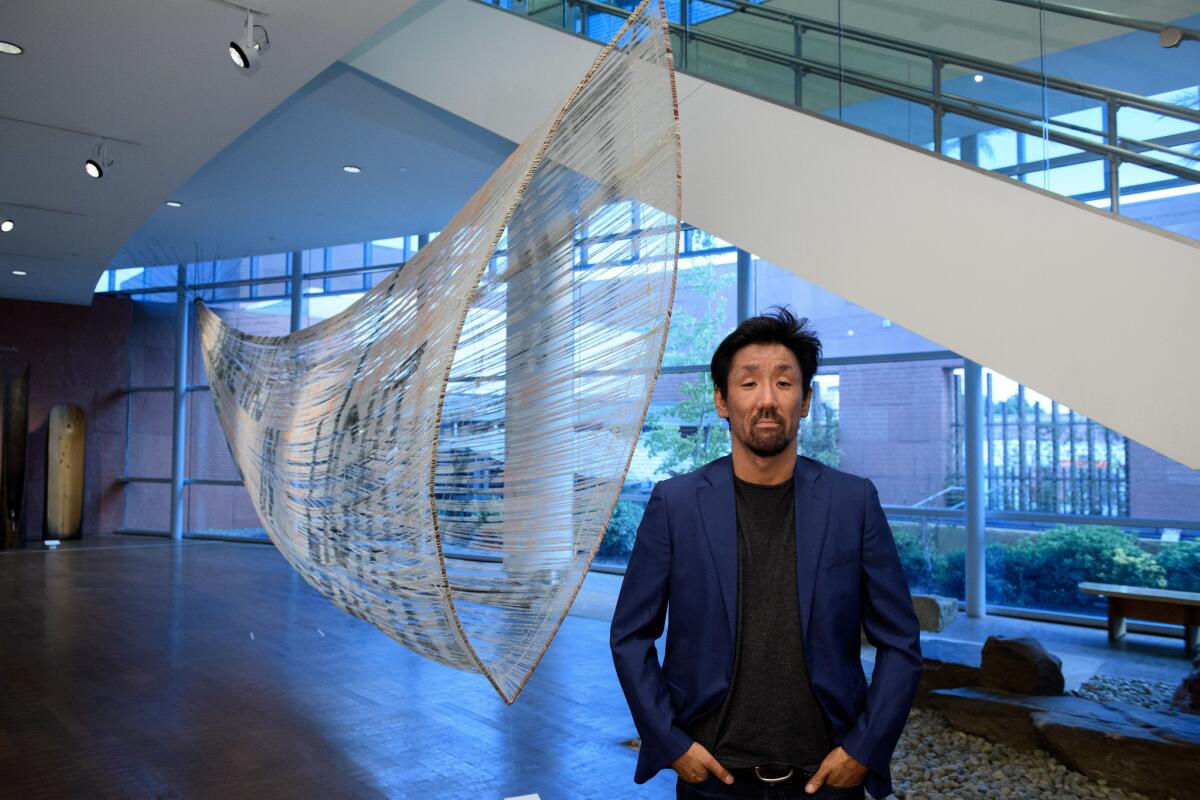
Dominating the first gallery are about a dozen totems on a low platform — sculptures hand-carved out of logs, some decorated with dried leaves and telephone wires, some simply trimmed or hollowed out. They are by Compton assemblage artist Kenzi Shiokava, who was born in Brazil and came to Los Angeles in the mid-1960s.
“He’s Japanese Brazilian, but very much part of a community of artists in Los Angeles,” said Kris Kuramitsu, one of the curators overseen by the museum’s artistic director, Clement Hanami. “Some of it comes out of his job for many years as a gardener. He was able to collect and work with wood and plants.”
On the wall facing the sculptures is a collage Shiokava put together using small portraits and candid photographs. They are old and new, some of himself and his family, some simply found and included, as if part of one large extended family.
The pull of competing identities is also explored by Eduardo Tokeshi in “Casitas de Fe,” where two small altars hang side by side. One is a simple wooden altar with spare Japanese aesthetics, the other is a two-level shelf crammed with small Peruvian folk art figurines in lively postures.
When asked whether art can deliver a reconciliation of two cultures, Katarina Wong replied: “I’m not sure there’s anything that gets settled. Exploring pulls out the layers of that experience, and there’s such a wealth in that exploration for me.”
♦ ♦ ♦ ♦ ♦ ♦ ♦ ♦ ♦ ♦
Asian connections in Pacific Standard Time: LA/LA
“Circles and Circuits I: History and Art of the Chinese Caribbean Diaspora”: California African American Museum, Exposition Park, 600 State Drive, Los Angeles. Ends Feb. 25. Closed Christmas, New Year’s Day and Mondays. Free. (213) 744-2084, caamuseum.org
“Circles and Circuits II: Contemporary Chinese Caribbean Art”: Chinese American Museum, 425 N. Los Angeles St., L.A. Ends March 11. Closed Christmas, New Year’s Day and Mondays. $2-$3. (213) 485-8567, camla.org
“Transpacific Borderlands: The Art of Japanese Diaspora in Lima, Los Angeles, Mexico City, and Sao Paulo”: Japanese American National Museum, 100 N. Central Ave., L.A. Ends Feb. 25. Closed Christmas, New Year’s Day and Mondays. Limited hours Christmas Eve and New Year’s Eve. $6-$12. (213) 625-0414, www.janm.org
See all of our latest arts news and reviews at latimes.com/arts.
ALSO
Times art critic Christopher Knight’s latest reviews
Times theater critic Charles McNulty’s latest reviews
Times architecture critic Christopher Hawthorne’s latest columns
The biggest entertainment stories
Get our big stories about Hollywood, film, television, music, arts, culture and more right in your inbox as soon as they publish.
You may occasionally receive promotional content from the Los Angeles Times.







